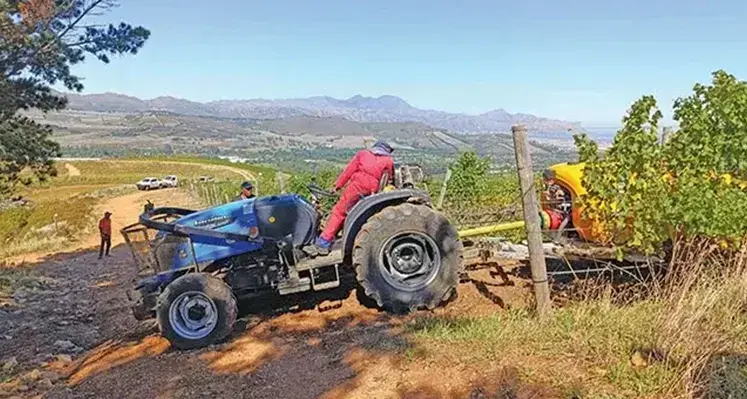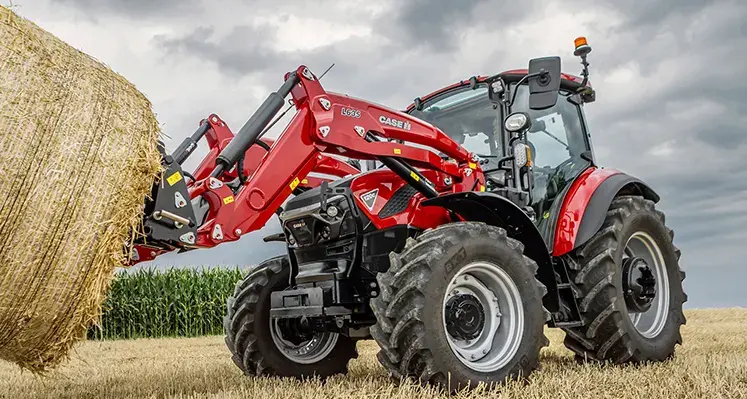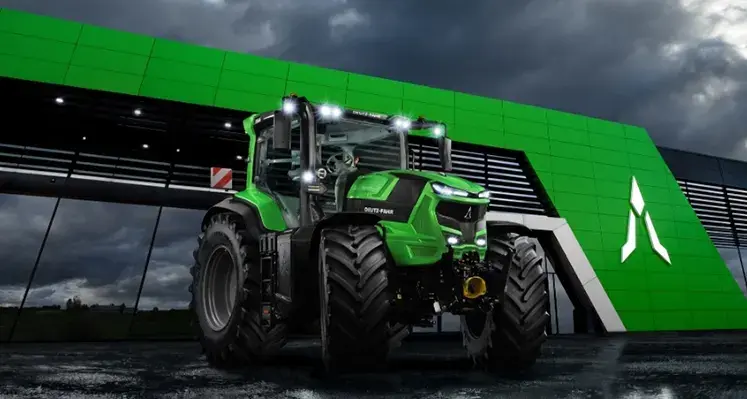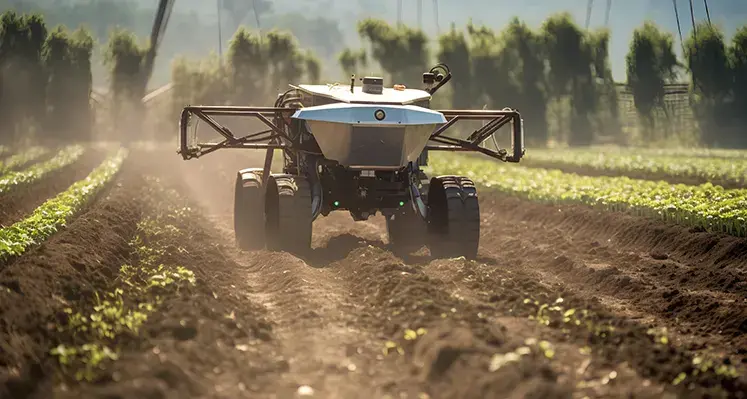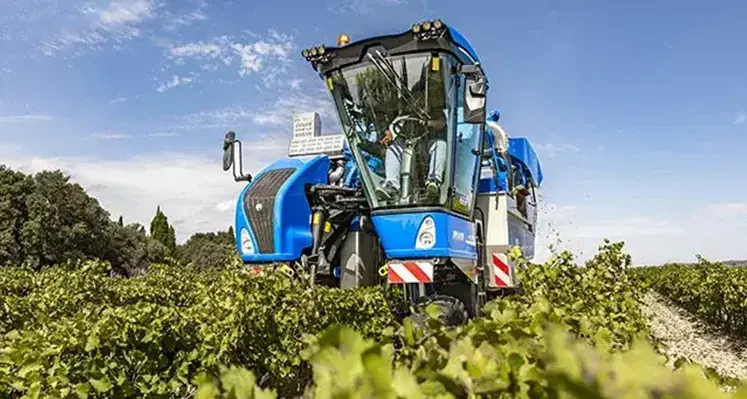
The Braud 8.50L can empty directly into trailers up to 3m high, significantly reducing downtime and maximising each harvesting shift.(Image credit: New Holland)
New Holland has expanded its specialist vineyard machinery line-up with the introduction of the Braud 8.50L, a compact yet incredibly powerful grape harvester designed to transform productivity in large commercial vineyards.
First launched in 2024 and showcased at Nampo Cape in Bredasdorp, this next-generation machine blends efficiency, precision, and grape-friendly technology making it one of the most exciting new arrivals in modern viticulture.
Although built for extensive vineyard operations, the Braud 8.50L remains agile. Its shorter frame allows for swift, confident turning at the end of tight rows—an essential feature for high-density vineyards looking to save time without compromising careful handling of vines and fruit. New Holland’s product marketing specialist, Derrick Coetzee, emphasised the model’s clever balance of strength and practicality, noting its versatile performance even in challenging terrain.
“With an overall length of just 5m and a powerful 144hp engine, the Braud 8.50L is both compact and capable. Farmers will notice quicker turnaround times, even in tough terrain.”
The machine’s upgraded engine provides an additional 16hp compared with previous versions, while the re-engineered transmission enhances smooth movement over uneven ground. These improvements, combined with reduced mechanical strain, result in faster harvesting cycles and lower long-term maintenance costs key considerations for vineyard owners managing tight seasonal windows.
A standout productivity booster is the 3 600ℓ hopper, which enables longer harvesting runs between offloading stops. The Braud 8.50L can empty directly into trailers up to 3m high, significantly reducing downtime and maximising each harvesting shift.
But where the machine truly shines is in its gentle grape-handling technology, a critical factor for winemakers prioritising quality. The adjustable Shaking Dynamic Control system allows operators to fine-tune harvesting intensity from the cab to suit real-time vineyard conditions.
“This allows the machine to shake just enough to remove the grapes without damaging the vines or crushing the fruit,” Coetzee said.
Supporting this is New Holland’s renowned Noria basket conveyor system, designed to cradle grapes carefully while maintaining constant contact with the vines ensuring minimal fruit loss and preserving shape and integrity.
“It’s the closest you’ll get to hand-picking, but much faster,” Coetzee explained.
Inside the machine, a destemming rotor, cleaning fan and on-board wash system work together to deliver cleaner grapes and easier maintenance. Meanwhile, the fuel-efficient four-cylinder engine ensures stability on slopes of up to 35°, assisted by automatic height and tilt control and a refined suspension system for smoother travel.
Adding to its advanced design, the harvester features the IntelliView™ IV Plus display, offering enhanced touchscreen functionality and improved visibility for seamless operation.
“The Braud 8.50L gives farmers more power, cleaner fruit, and less downtime,” Coetzee said. “It’s built to deliver results, season after season.”





